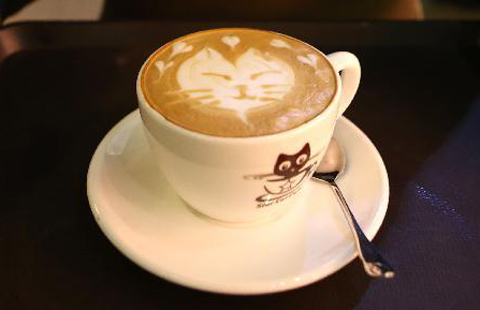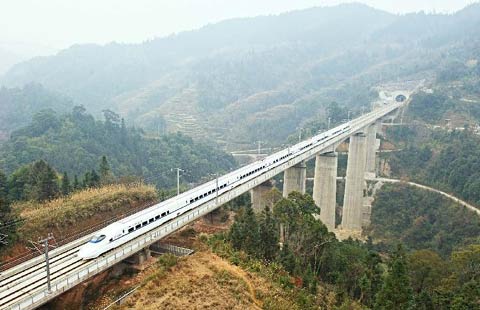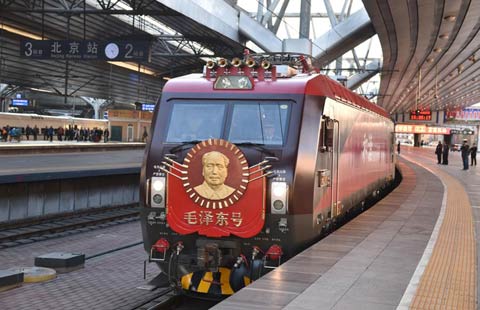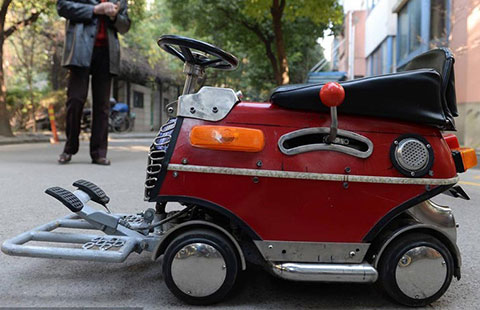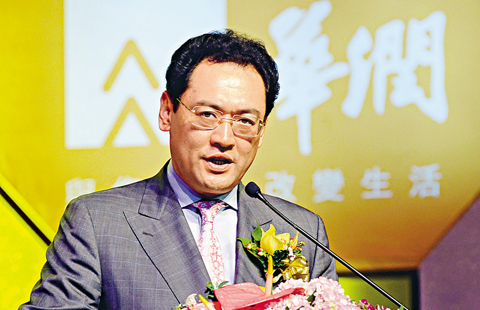Tills ringing in toytown where traders see huge opportunities
By XU JINGXI/WANG JIAN (China Daily) Updated: 2014-12-29 09:10"But on whether some are actually dangerous or poisonous, it really is the job of the Vietnamese commodity inspection authorities to ensure that never happens," she says, insisting that her team would never sell any such goods.
Qiu Bofeng, marketing manager of his family's 20-year-old Guangzhou Comelytoys Co Ltd, has an office in a three-story building overlooking Yide Road.
Below his office he operates a wholesale store selling fluffy stuffed toys of popular cartoon figures.
He says made-in-China toys remain popular across Southeast Asia, with price the primary concern for his buyers.
"They prefer small toys so that they can transport more goods at a time to save on freight costs. Some of those who buy bigger toys ask us to use less filling so they can sell slimmer toys at a lower price," Qiu says.
"Unlike US and European buyers, they don't require quality tests or copyright authentications," he says.
Orders from Southeast Asian buyers used to account for 30 percent of Guangzhou Comelytoys' sales, but that has now dropped to just 10 percent.
"The global economic climate is not good and many buyers have started buying online rather than visiting physical stores. So I've been working on establishing our business on Taobao," says Qiu, referring to the online platform of e-commerce giant Alibaba Group Holding Ltd.
Qiu, a recent graduate who has been helping the family firm expand its operations online, also says that rising labor costs have put added pressure on the Chinese toy industry, at a time when margins are already thin.
Another shop owner surnamed Wu, whose toy store is in the Onelink International Toys and Gifts Wholesale Market, opposite to Qiu's, says the Southeast Asian market is especially sensitive to even the slightest price changes.
"Southeast Asian buyers used to contribute 80 percent of my business, but that share has plunged to only 30 percent in the past two years," says Wu, whose shop was started about five years ago and mainly sells car models and remote-control toy planes.
"That's because wholesale prices have risen together with labor costs, adding several yuan per item. On an order of 1,000 pieces, the total cost will have risen significantly," she says, adding that other wholesale markets in Yiwu, Zhejiang province, for instance, have also brought fierce local rivalry.
"The products sold there are also made in Guangdong. But with strong support from its local government, those wholesale markets have been able to expand their scale and lower their prices."
The latest customs data show the Southeast Asian market still remains the main driver for Guangdong's toy industry, the country's biggest.
Toy exports through Guangdong ports to ASEAN countries grew 41.3 percent in October, while the values of exports to the US and the European Union, the two biggest markets, fell 1.8 percent and 5 percent respectively.
To maintain that Asian growth, the Chinese toy industry must shake off that image of "low price, low quality", especially as some Southeast Asian countries now attach more importance to toys' safety and quality.
Vietnam introduced stricter standards for imported and domestic toys in April 2010, setting upper limits for both pH value and formaldehyde content for products. The former standards only set physical and mechanical requirements.
"It is good for the long-term development of China's toy exports if manufacturers of low quality products are eliminated from the market," says Chen Yueping, assistant to the general manager of Xinghui Auto Models, a member of the Rastar Group Co Ltd based in Shantou, Guangdong.
Chen's company focuses on the United States and European markets while Southeast Asian clients contribute just 10 percent of the business.
"Those made-in-China toys sold in Southeast Asia mostly come from small factories that focus on low price.
"Our products pass China Compulsory Certification and use only environmentally friendly materials. The cost is higher and thus the price is higher," he says.
- Electrical cable maker finds doing business in Afrira challenging
- China UnionPay Cards Surge in S. Korea
- China central bank alters deposits calculation rules
- Hoteliers eye outbound deals for business growth
- China to ease investment rules in FTZ
- Farming innovation gets overseas inputs
- Tills ringing in toytown where traders see huge opportunities
- Working priorities shift for new graduates
